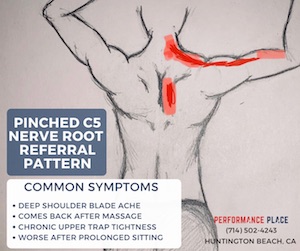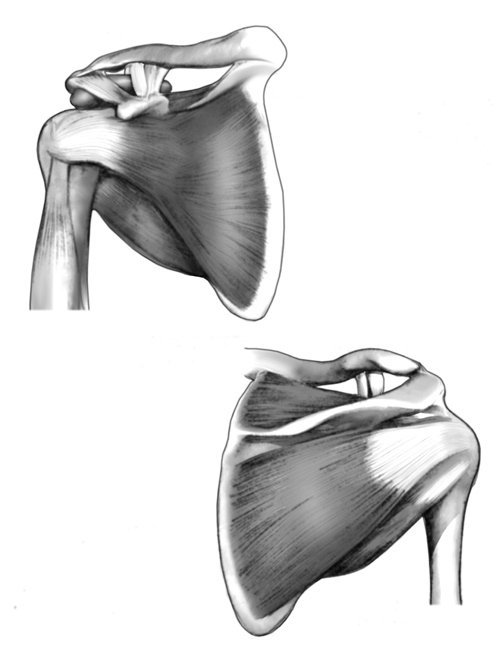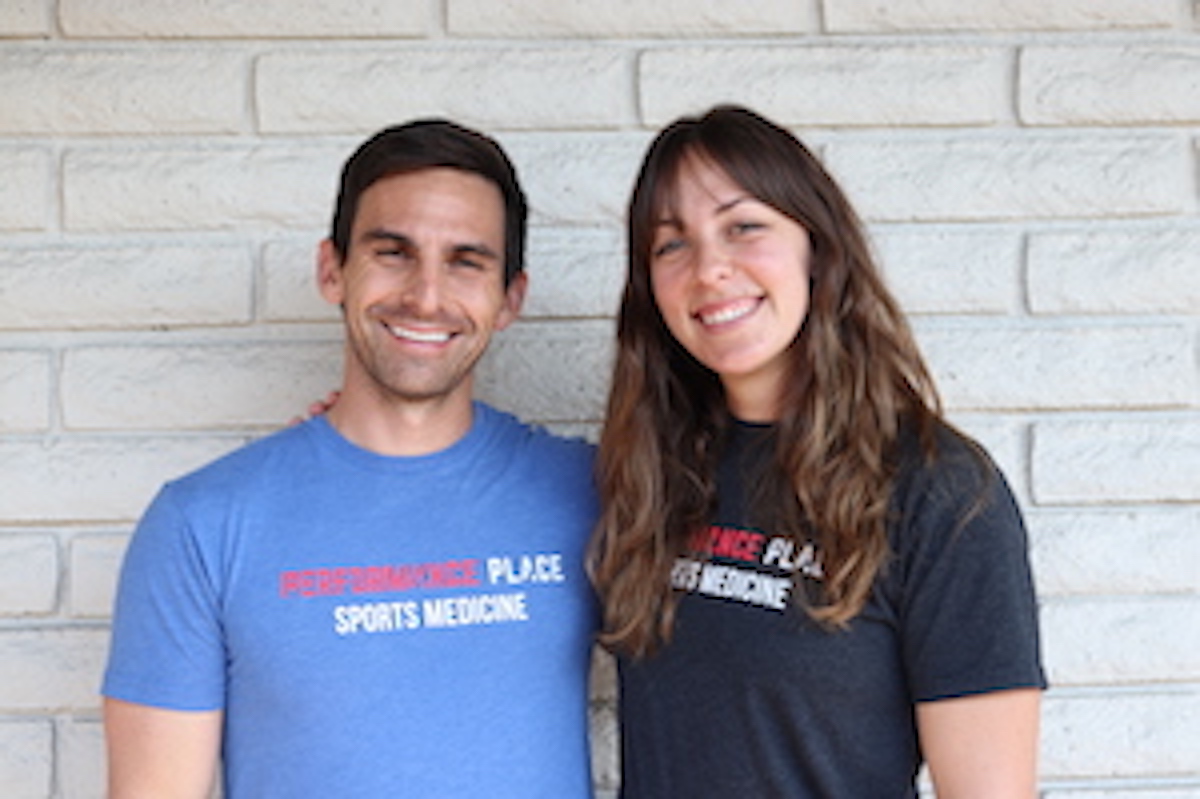[2021 Update] How To Fix Rotator Cuff Shoulder Pain
Rotator cuff shoulder pain is really common but by the time you finish this article you will have a better idea of what to do next in your journey to recovery!
The rotator cuff muscles are a group of muscles that help stabilize the shoulder joint properly. There are 4 muscles of the rotator cuff (supraspinatus, infraspinatus, teres major, subscapularis muscles).
These muscles are not the only muscles that are required to have a healthy shoulder joint. The muscles of the shoulder blade, and even the core and hips, are required for proper shoulder function.
The shoulder joint is where the head of the humerus (arm bone) inserts into the shoulder blade (scapula). This is called the glenohumeral joint.
Within the joint space lives, the shoulder labrum (cartilage) and a space that is often associated with shoulder pain is called the subacromial space.
Rotator cuff shoulder pain can happen to anyone, yet people who require more use from their arms and hands tend to suffer from it the most. Carpenters, contractors, athletes, baseball players, golfers, mechanics, and many more can suffer from rotator cuff pain.
Hi. I’m Sebastian Gonzales. I’m a sports chiropractor and Director of Care at Performance Place Sports Care in Costa Mesa, CA.
Within this article (updated in 2021), I’ll be covering what most other articles do not about shoulder pain.
Read each section in its entirety.
I’ll be packing each with great info you can not afford to NOT know.
Most of Dr. Google’s articles will cover “non-referred” shoulder pain, bursitis, labrums, impingement, rotator cuff tears, and more. I will touch on these BUT I will also cover the other 50% of shoulder pain cases that are known as “referred shoulder pain.”
You will want to know more about these since referred shoulder pain will not often respond to typical shoulder pain treatment and rehabilitation… leaving you confused about what to do next. This is super common, which is why I decided to write this article.
Don’t worry. I have you covered!
By the way, we can help you in-person or virtually with shoulder pain. Just contact us here to discuss your options. We even offer a free 15 min Zoom call to discuss if we can help you are not.
Enjoy the article!

Symptoms Of Rotator Cuff Shoulder Pain
Pain associated with rotator cuff shoulder pain can present in a variety of different ways.
- Shoulder pain that wakes you up at night
- Pain in the shoulder as you put up or brush your hair
- Difficulty reaching to overhead locations, with even light objects (cups, dishes, jackets)
- Hard to wash behind your upper and lower back in the shower
- Feels like a deep ache, stabbing or pinching sensation in the front or side of the shoulder
Other “unrelated” symptoms that can further give clues of when the shoulder pain you’re experiencing is referred pain or not.
Referred pain means that the symptoms of shoulder pain are not coming from a shoulder structure.
This type of presentation occurs roughly 50% of the time based upon the finding of a 2020 study by Rosedale et al in the Journal of Manipulative Therapy.
Shoulder pain can often be referred from a spinal origin, even in the absence of spinal pain.
Note: it can also be referred from an organ. The lungs, heart, and spleen are a few common.
Spinal-origin referred pain often will present in combination with 1 or more of these clues:
- Failed rotator cuff tear treatment
- Neck pain
- Position of your head changes your level of pain
- Pillow positions affects your intensity of pain
- Pain between shoulder blades
- Symptoms of any type below the elbow (tension, pain, stabbing, numbness, and muscle twitches to name a few)
- Symmetrical pain on the opposite side of the body
- Pain that moves around
- Worse in the morning hours
- Worse while sitting
- Better while walking
- No change with rotator cuff physical therapy
- X rays and MRIs shows nothing is wrong
- Application of KT tape on the rotator cuff helps
- Cupping the shoulder helps
Spinal-referred shoulder pain happens often in the absence of neck pain, yet many people have associated neck stiffness they discount as “normal for them” or “age related.”
Treatment for this type of shoulder pain does not require surgery or medication. Recovery is often more simple and rapid than a shoulder labrum or a rotator cuff tear. We will cover this more in a later section. Feel free to skip there.
Organ-based would not be my expertise to discuss at length however, you may experience associated symptoms like changes of digestion, bowel movements, fecal color or consistency, fever, feeling run down, sickness, and so on.

What Causes Rotator Cuff Pain?
As mentioned above, rotator cuff pain is 50% of the time from the shoulder joint and 50% of the time it is referred pain.
When looking at a true rotator cuff tear, the consensus is that most tears are progressive in nature.
They do not happen from a single event.
Pain creeps up on you over time, leaving you bewildered thinking “but I didn’t do anything.” Many people “wake up with shoulder pain” after no prior accident or aggressive activity the prior day.
Some doctors will say it is from tendon degeneration or “wear and tear” of the tendon over time caused by many overhead motions in your lifetime.
With that being said, these types of tendon degeneration situations will not often happen in people under the age of 40. Let’s logically think about this. Most people under the age of 40 have not had enough life or activity to merit this mechanism of injury.
In my personal experience, most people under the age of 40 have spinal-referred rotator cuff pain… yet there are always exceptions.
Causes include:
- Poor posture
- Sitting too much
- Not being active enough
- Poor ergonomics (very common with the 2020 push of working virtually)
Couple these with playing a sport and we have the common scenario where a player brings a pre-existing problem to their sport, has pain in the sport and then thinks it is a sports injury. The truth is reduction of the original causes will also reduce the “sports injury.”
Spinal-referred rotator cuff shoulder pain occurs in the same fashion as shoulder pain, meaning it creeps up on people. No trauma is required. No neck pain is required. This is the situation most of the time.

Diagnosis of Rotator Cuff Shoulder Pain
We’ve discussed shoulder pain versus referred shoulder pain.
Now let’s see the diagnoses list.
- Rotator cuff tear
- Cervical spine disc irritation (herniation, protrusion, etc)
- Cervical radiculopathy (pinched nerve)
- Subacromial Impingement of the shoulder
- Glenohumeral labral tears
- Rotator cuff tendonitis
- Rotator cuff tendinosis
- SLAP tears
- Systemic disease referred
Many of you have read about these diagnoses, yet most of you will not have them. I’ll tell you why (again my clinical reasoning and experience).
- Bursitis of the shoulder (most people don’t have swelling or heat locally)
- SICK scapula (this is often a secondary problem from pressure on a nerve, such as the long thoracic nerve)
- Infraspinatus strain (often posterior shoulder pain is cervical referred)
- Shoulder blade muscles are “off” (This is not a diagnosis. This is an observation that happens when we have many types of shoulder pain)

Treatment Options for Shoulder Pain
Whether your shoulder pain is referred or not, you have many effective treatment options before you jump into medications, injections, or surgery.
In the case of true shoulder pain, (rotator cuff tears, labrum, low-grade SLAPs, bursitis, tendonitis, tendinosis) all you need is a custom rehabilitation program, coached by someone who knows how to coach movement.
Since there is typically no trauma involved in shoulder pain cases, dysfunctional movement and muscular imbalances are found to be the culprit.
Coaching of exercises is required. I would love to say the exercises are magic but is HOW YOU DO the exercises.
The estimation is 9 out of 10 shoulder pain cases will respond well to 12-16 weeks of rehabilitation. Progression is typically not linear, yet some ups and downs should be expected as you integrate activities you were avoiding.
Rehabilitation of shoulder pain normally should include:
- Shoulder stretches
- Soft tissue work
- Shoulder exercises
- Resistance training
- Core exercise
- Coaching should be specific to YOUR PROBLEM
I can not stress that enough.
Bad coaching yields poor recovery from shoulder pain.
This is often performed by a sports chiropractor or sports physical therapist. Not all chiropractors and physical therapists specialize in shoulder pain in your specific age group and activity level. Buyer beware.
At Performance Place Sports Care, we specialize in coaching exercise. We are excellent at shoulder pain recovery. Just read our reviews on Google!
Spinal-referred shoulder pain is even simpler to resolve with the right treatment. It does not often require “back cracking” or even soft tissue massage.
Rehabilitation of spinal referred shoulder pain normally should include:
- Neck and mid back stretches
- Thoracic uprighting exercises
- Walking
- Change of work/ desk position
- Corrective exercise for the shoulder blade and neck
- Resistance training
- Core exercise
- Coaching should be specific to YOUR PROBLEM
Do you need shoulder pain treatment right away?
Treatment does not need to happen immediately. Many people “deal with” shoulder pain by their methods for months before seeking professional treatment.
A general rule to follow is not to let it pass 6 months. Tendon injuries beyond 6 months become “degenerative” and are more challenging to recovery from.
Yet if you have had your pain for over 6 months, don’t worry. You can still recover. You just will need to work extra hard to climb up a bigger hill.

Is Surgery Your Only Option
Surgery is not your only option. Situations, where shoulder surgery is higher on the list, are the following:
- Complete rotator cuff tear with retraction
- Labral tear above a grade 2
- Bucket handle presentation
- Repetitive dislocations of the shoulder
- Progressive and rapid motor loss of the hand
- Loss of musculature of the arm or hand
Your level of pain is not an indication of surgical need.
In Closing
If you have been suffering from shoulder pain and feel like you have tried everything, you probably haven’t. Finding the right person regarding a correct diagnosis, treatment plan design and effective coaching is challenging. To be honest, there is no better place to start than to just call and speak with a facility.
- Ask how they manage shoulder pain.
- Do they ever see shoulder pain referred from the neck?
- What is their typical client type?
- What types of things will they have you do?
Get a feel of who your doctor and staff will be before you commit to care. Once you find the right team, you will feel normal again in no time.
If you want us to help you, we can. We are able to help people recover from shoulder pain VIRTUALLY or IN-PERSON.
Our style of care doesn’t fully require us to place our hands on you because we emphasize coaching the right exercises that you can do at home. We can do this in person or via a video call.


